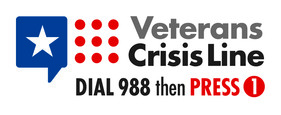The U.S. Department of Veterans Affairs (VA) Greater Los Angeles Healthcare System’s (GLA) 388+-acre West Los Angeles (WLA) Campus has a long history of service to Veterans.
First established in 1887 as a home for disabled Veterans on land donated to the United States by Arcadia Bandini de Baker, the WLA Campus evolved over the years and moved away from residential beds to clinical care beds and providing a full continuum of health services to Veterans under the Veterans Health Administration arm of VA. This includes medical care and research, Community Living Centers (nursing home graduated care), and residential domiciliary treatment programs for substance use disorder, severe mental health and chronic homelessness care. Over time, medical activities were mostly concentrated on the southern portion of the WLA Campus (south of Wilshire Boulevard, referred to as the South Campus) and the remaining buildings and open parcels of land on the northern portion of the WLA Campus (north of Wilshire Boulevard, referred to as the North Campus) began to suffer from lack of use, investment and upkeep.
Other non-Veteran focused commercial uses were introduced to the WLA Campus, resulting in a shift from its core and historical mission. A lawsuit was brought forth by various stakeholders, including local Veteran advocates and descendants of relatives of the original land donors, challenging the government’s use of the WLA Campus. On January 28, 2015, VA signed the Principles for a Partnership and Framework for Settlement (referred to as the “Principles Agreement”) resulting in the Plaintiff Party withdrawing their lawsuit and outlining initial objectives for engaging with stakeholders, developing a Draft Master Plan (DMP) as part of VA’s strategy to address Veterans homelessness in the region and to expand needed services to Veterans associated with the use of the WLA Campus.
The VA itself may not construct housing per regulation and must contract with developers in order to achieve its monumental mission at WLA. Rather than continuing with individual Enhanced Use Leases (EUL) under separate developers, VA engaged a Principal Developer (also called ‘The West Los Angeles Veterans Collective’) to approach the WLA Campus redevelopment holistically as a neighborhood and a community. The West Los Angeles Veterans Collective (WLAVC) was selected as the Principal Developer in November 2018 pursuant to a competitive Request For Qualifications (RFQ) selection process.
Additionally, the concept of a Principal Developer is considered a best practice in order to maintain community cohesiveness and coordination. Simply put, having fewer land and programming developers increases the ability to coordinate the North Campus in working toward the same vision of quality housing and a comprehensive service model. It also allows for integrated function of the community once it’s built, translating to the best quality of life for veterans and families living within the new community.
The WLAVC (also called the Principal Developer Team) is a world class, locally-rooted, and mission-driven team comprised of three agencies: U.S.VETS, Century Housing and Thomas Safran & Associates. Together, we have a deep history of Veteran-specific housing development and service provision. Two of the Collective’s agencies are led by U.S. Military Veterans—Ron Griffith, President and CEO of Century Housing (recipient of the Combat Infantry Badge and Purple Heart), and Stephen Peck, CEO of U.S.VETS (recipient of the Navy Commendation Medal). Our team is deeply committed to the successful housing and care of military Veterans and their families through the provision of service-enriched housing that promotes recovery, wellness,community and a more hopeful future.
In Los Angeles County, there are currently approximately 3,681 Veterans and countless family members homeless on any given night. The West Los Angeles Veterans Collective’s mandate is pursuant to the 2016 West Los Angeles Leasing Act and Enhanced Use Lease that governs our work aboard the north campus of the West Los Angeles VA to undertake a sacred charge of restoring the North Campus to the care and housing of Veterans as envisioned in 1887.
The Master Plan and Community Plan
Leveraging the 2016 VA Draft Framework Master Plan, the WLAVC was tasked with creating a Community Plan to support and guide the development of at least 900 additional units of supportive housing for homeless and at-risk Veterans and their families on the North Campus to reach the wider VA Draft Master Plan’s broader goal of at least 1,200 homes. The wider VA Master Plan encompasses the plan for the entire West Los Angeles VA campus, whereas the Community Plan includes only approximately 80 acres comprising the North Campus redevelopment efforts of the Collective. Thus, the WLAVC Community Plan is an integral component of the Master Plan. The VA Greater Los Angeles Healthcare System (VAGLAHS) West LA Campus’s Master Plan 2022 Draft is now available for public review and comment. Please see the Federal Register at https://lnkd.in/gmw_yJqy, outlining where the document is available and how you can leave comments. A direct link to the plan is here: https://lnkd.in/gTG8R5N3. There are 60 days for public comment until the Federal Register closes on Friday, December 17, 2021. Please visit and contribute your ideas and feedback in this monumental effort to care for and house homeless and at-risk Veterans and their families.
Who Will Be Housed? What Services Will Be Provided?
Homeless and at-risk Veterans of all backgrounds and service eras will be housed to include specialized supportive housing for subpopulations such as: Senior Veterans, women Veterans, LGBTQ Veterans, Veteran families including single-parent Veteran families, Iraq/Afghanistan era Veterans, chronically homeless Veterans, disabled Veterans, and Veterans who experienced Military Sexual Trauma. Working with the VA and LAHSA, data regarding current community needs will be reviewed yearly and services for specific populations will be incorporated accordingly.
The North Campus will consist of individual housing developments, supported by a 501(c)3 “backbone” association called The Veterans Collective (“TVC”). TVC will have administrative oversight for community coordination and common areas. Each housing development will be responsible for its own property management; however the 501(c)3 will help to coordinate joint property management standards, whole-campus safety protocols, and community upkeep in shared spaces. Utilizing a “Collective Impact” model, The Veterans Collective will also convene campus stakeholders and service providers around the needs of the community via a campus Veteran and community stakeholder Alliance.
A continuum of services will be available on the North Campus, both for those residing in the housing units and for Veterans and families in the wider geographic area not living on the campus. For instance, each individual housing development is designed to serve Veterans and their families living onsite via HUD/VASH case management onsite as well as dedicated services provided by U.S.VETS, the North Campus’s lead service provider. There will also be support from The Veterans Collective’s Building 300 (Integrated Service Center) and Building 13 (Town Hall) components for wider regional service needs for all Veterans in need.
What Are Your Biggest Obstacles?
The original 2016 Draft Master plan framework has been encumbered by a range of constraints as planning and development have unfolded, necessitating some changes from previous drafts. These include:
- Necessary additional Veteran, partner, community, and VA engagement
- Additional time to investigate site constraints and opportunities
- Legislative and legal constraints
- Environmental mitigations and hazards
- Financing requirements and constraints
- Necessary infrastructure improvements
- Historic preservation opportunities and building constraints
- Land use considerations to engage and insulate
- Neighborhood constraints and opportunities
- Progressive timelines (ie, action-oriented, funding commitments, plan reviews, due diligence performed on developments)
Other barriers to rapid housing development also include the availability and timing of public and private philanthropic funds. Permanent supportive housing projects require numerous public subsidies to be financially feasible. All of these subsidies are highly competitive, are typically oversubscribed and are on different funding cycles. Housing on the VA campus may depend on availability and timing of public subsidies from the County and/ or the City of Los Angeles. The City of Los Angeles has already substantially allocated its Proposition HHH funds. Future VA housing projects may apply to the County for allocations of No Place Like Home (NPLH) funds, to the extent available. Future projects are likely to be funded through the State Housing and Community Development (HCD) funding programs including IIG, AHSC, VHHP, MHP and others. More information on HCD’s funding programs can be found here: HCD Grants and Funding (ca.gov)
Timelines
Estimated completion time for all units of housing is estimated to be over the next ten plus years. Los Angeles is in the midst of a housing crisis that disproportionately affects the Veteran community. Permanent supportive housing for our Veterans is desperately needed throughout the County. The redevelopment of West LA VA campus offers Los Angeles a unique opportunity to significantly address this Veteran need. The creation of a thriving community on the North Campus will require a long-term vision and years of effort. Development of this community will be phased over time to minimize impacts, leverage infrastructure investment, and concentrate the residents around available services. Each individual housing development will be designed, financed, and constructed independently but coordinated within the broader community on the campus. The development of supportive housing is subject to many constraints. This includes the availability of highly competitive public financing (local, state, and federal) and private philanthropy as discussed above.
Housing development will be completed in phases. This is due to the challenge of coordinating infrastructure (as touched on above) to support the developments as well as the logistics involved with relocating currently occupied administrative and medical buildings on the North Campus. The first housing units for homeless Veterans 62 and older and their family members/caretakers in Building 207 are anticipated to be completed in Fall of 2022.
For more information, please visit The West Los Angeles Veterans Collective website at wlavc.org.
Tess Banko is project director for U.S.VETS.













Greetings! I simply want to offer a huge thumbs up for the great stuff you have got here on this post. I’ll be coming back again to the blog for more very soon.